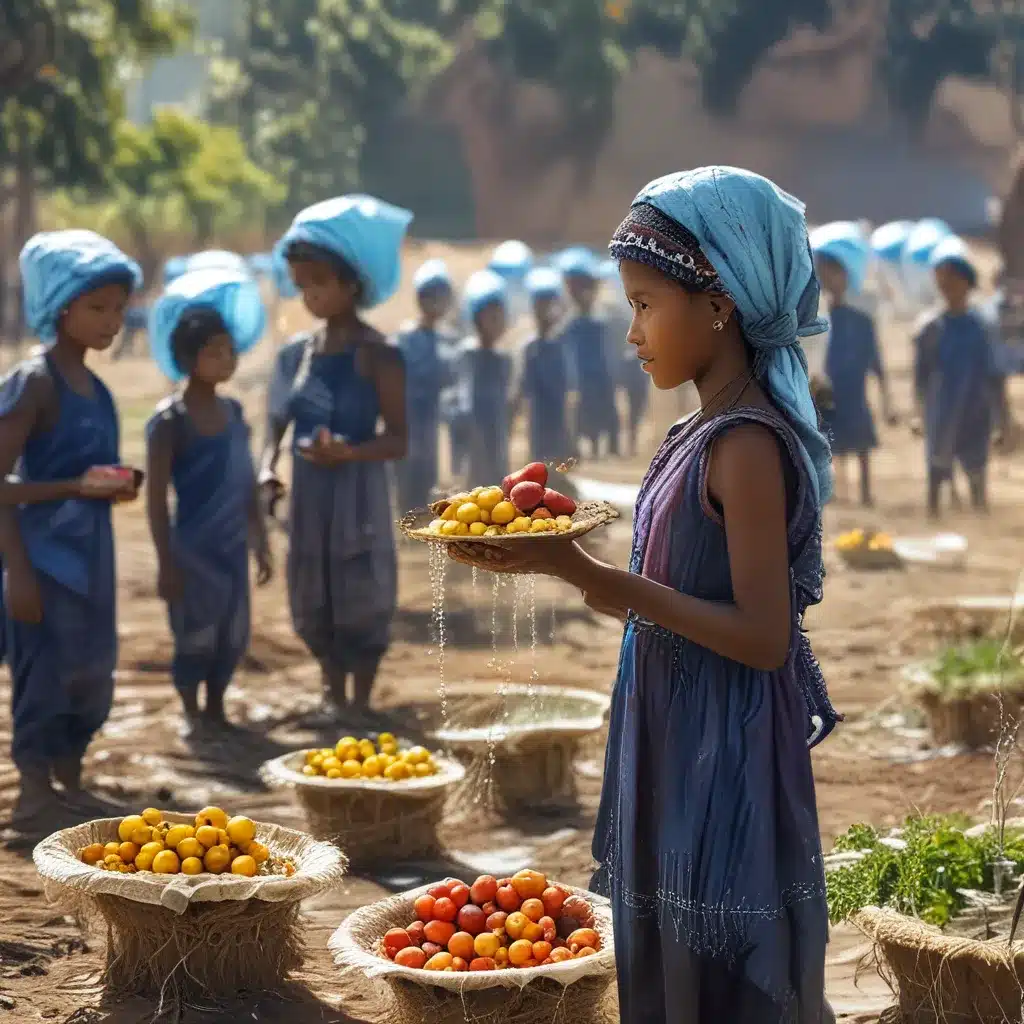
Feeding the Masses: How Technology is Revolutionizing Global Sustainability
As I sit in my cozy office, sipping my morning coffee and staring out the window, I can’t help but be amazed by the incredible advancements in technology that are tackling one of the biggest challenges facing our planet – feeding the ever-growing population. It’s estimated that by 2050, there will be 10 billion mouths to feed, and the task of providing enough food and clean water for all can seem daunting. But fear not, my tech-savvy friends, the future is looking bright, and it’s all thanks to the brilliant minds pushing the boundaries of innovation.
Transforming Fisheries: Sustainable Seafood for All
Let’s start with the oceans, shall we? According to The Nature Conservancy, global wild capture fisheries reached a staggering 964 million metric tons in 2018. That’s an astounding amount of wild animals being removed from our natural habitats! But the good news is, there’s a solution in the works.
The team at The Nature Conservancy is spearheading a global effort to reform the way we manage our fisheries, ensuring a sustainable supply of seafood for generations to come. Through innovative technologies like electronic monitoring and collaborative projects with local fishing communities, they’re filling critical data gaps and empowering stakeholders to implement science-based management strategies.
In Kenya, for example, they’re working with the Pate Marine Community Conservancy to support community-designed solutions, such as seasonal closures and gear restrictions, that have allowed local leaders to sustainably manage their octopus fishery. And in the US West Coast Groundfish fishery, they’ve helped develop the California Groundfish Collective, where fishermen create risk-based spatial plans and share information to reduce the catch of vulnerable species.
It’s not just about protecting the fish, though. The Nature Conservancy’s work also focuses on supporting the livelihoods of the millions of people who depend on these fisheries for their income and sustenance. By collaborating with seafood buyers and other supply chain actors, they’re incentivizing sustainable practices and ensuring a fair deal for the hardworking men and women who bring the bounty of the sea to our plates.
Precision Agriculture: Feeding the World with Technology
But the oceans aren’t the only battleground in this fight for global food security. On land, the agricultural industry is undergoing its own technological revolution, and it’s nothing short of mind-blowing.
Imagine a world where farmers can precisely monitor the health and needs of their crops, down to the individual plant. With the power of precision agriculture technologies available at https://itfix.org.uk, they can do just that. From drones equipped with hyperspectral cameras to soil sensors that track moisture and nutrient levels, these cutting-edge tools are giving farmers the data they need to optimize their operations and maximize their yields.
But it’s not just about producing more food; it’s about doing it in a sustainable way. By precisely applying water, fertilizers, and pesticides only where and when they’re needed, these technologies are helping to reduce the environmental impact of agriculture, conserving precious resources and protecting our delicate ecosystems.
And the benefits don’t stop there. Imagine a world where every farmer, no matter their location or resources, has access to the same cutting-edge tools and expertise. That’s the vision of organizations like The Nature Conservancy, who are working tirelessly to bring these transformative technologies to smallholder farmers across the globe, empowering them to feed their communities and build a more food-secure future.
Aquaponics: Combining Aquaculture and Hydroponics for Sustainable Food Production
But what if we could take the concept of precision agriculture one step further and combine it with the wonders of aquaculture? Enter the world of aquaponics, a revolutionary system that seamlessly integrates fish farming and hydroponics to create a closed-loop ecosystem of food production.
In an aquaponic system, the waste from the fish serves as a natural fertilizer for the plants, while the plants in turn help to purify the water for the fish. It’s a symbiotic dance that not only produces a bountiful harvest of both fish and produce but does so in a way that is incredibly water-efficient and environmentally friendly.
And the best part? Aquaponic systems can be scaled to fit any size, from small-scale urban farms to large commercial operations, making them a viable solution for feeding communities of all sizes. Imagine a future where every city has its own thriving aquaponic farm, providing fresh, locally-grown food to its residents while also reducing the carbon footprint of long-distance transportation.
A Future of Abundance: Embracing Technology for Global Sustainability
As I sit here, contemplating the incredible potential of these technological advancements, I can’t help but feel a sense of excitement and hope for the future. The challenges we face in feeding a rapidly growing population may seem daunting, but with the power of innovation and the tireless efforts of organizations like The Nature Conservancy, I believe we can not only meet those challenges but exceed them.
So, let’s embrace the future with open arms, shall we? Let’s dive headfirst into the world of precision agriculture, sustainable fisheries, and aquaponic farming, and let’s work together to build a more food-secure, water-abundant world for generations to come. The future is ours to shape, my friends, and with technology as our ally, the possibilities are endless.












